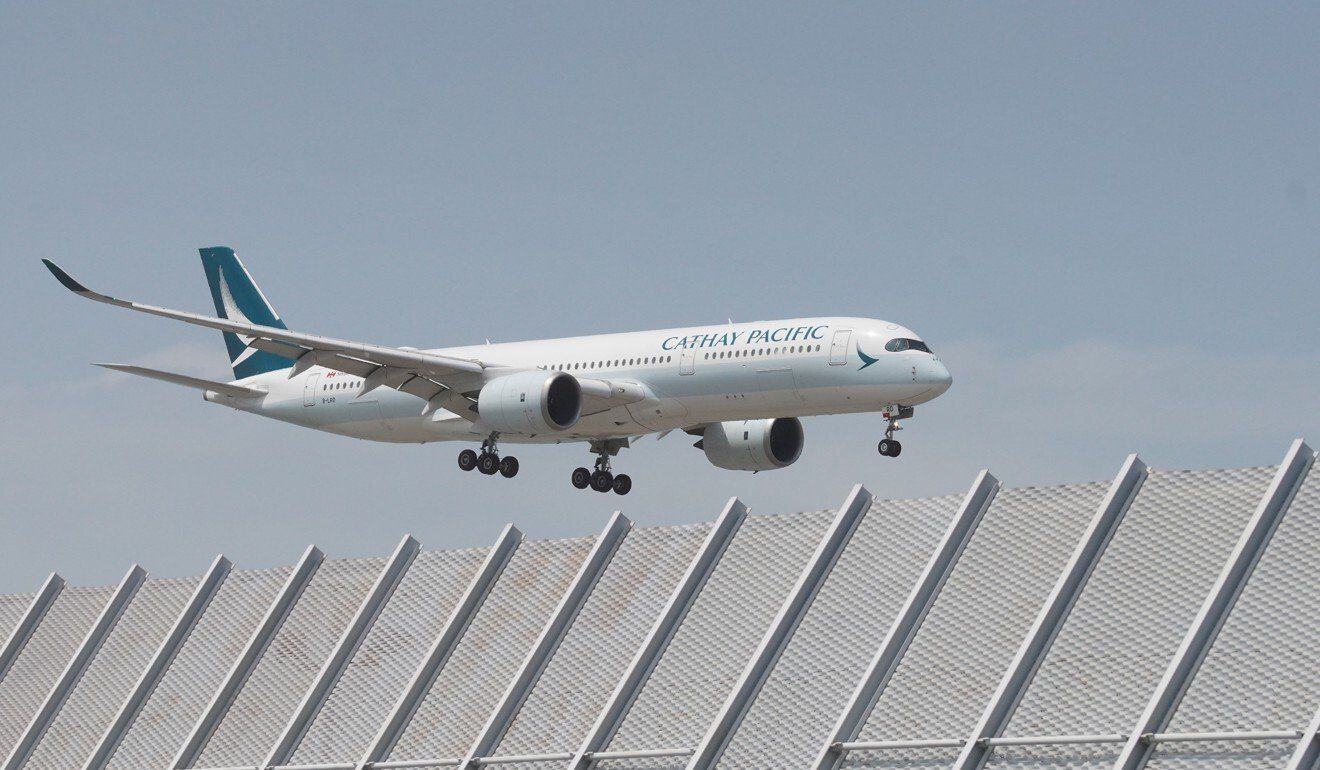Hong Kong News

Cathay ‘could lose overseas runway slots’; airline reports HK$7.6 billion loss
Hong Kong must further reopen to overseas travellers or Cathay Pacific will be forced to hand back unused runway slots to foreign airports, dealing a permanent blow to the city’s status as an international hub, a top executive has warned.
The assessment came as the company on Wednesday unveiled losses of HK$7.6 billion (US$977 million) in the first half of 2021, a modest improvement over the shortfall posted in the same period last year.
Airports generally grant runway slots on a “use it or lose it” basis, and as travel begins to rebound outside Asia, many have started removing exemptions on usage that were granted to airlines unable to fly due to the Covid-19 pandemic. On Wednesday, Cathay executive director Ronald Lam Siu-por acknowledged to analysts that there was a “certain risk” the airline could lose its runway slots in future, though he did not specify where.
“We may lose some precious slots we have obtained over the years in overseas markets. That could harm the Hong Kong aviation hub status, so therefore it is important for Hong Kong to keep pace with the recovery in the rest of the world,” Lam warned.
The Post previously reported similar warnings from the head of a major aviation industry trade group that Hong Kong risked losing access to European airports if it kept up its strict travel restrictions.
The situation could also crimp Cathay’s recovery. In the first six months of 2021, the airline managed to partially stem its losses, due in part to the continued strong performance of its air cargo business.
But Hong Kong’s flagship airline said new coronavirus variants continued to hold back its core business, passenger travel.
Cathay made just HK$748 million from passenger flights in the first half of 2021.
In the first half of 2020, the carrier lost a record HK$9.87 billion, later adjusted down to HK$7.4 billion. In the latest reporting period, after stripping out one-off impairment and restructuring charges, the company reported an adjusted loss of HK$6.7 billion.
The cargo business continued to be its main breadwinner, generating four-fifths of revenue in the first half of this year, 17 times more than passenger operations. Revenue slumped 43 per cent compared with the same period last year, while costs fell 40 per cent.
“Covid-19 continued to pose significant challenges for the Cathay Group in the first half of 2021 and this continues to be the toughest period in our history,” said Patrick Healy, the airline’s chairman.
“Travel restrictions and quarantine requirements continue to affect cross-border travel adversely …[and] the pace and timing of recovery remain uncertain.”
The airline’s passenger planes were only 18.9 per cent filled from January to June. However, cargo would continue to “perform strongly” through the end of the year, Cathay said.
During the first half of 2021, Cathay continued to push a range of permanent and temporary staffing cuts in a bid to reduce costs. As a result, the group’s workforce fell by a further 2,500, to 23,100, since the end of last year.
Cathay’s cash war chest, meanwhile, grew to HK$32.8 billion, while its cash burn during the financial reporting period was less than HK$1.5 billion a month. The company expects to burn through less than HK$1 billion a month in the second half of the year.
CEO Augustus Tang Kin-wing said Cathay remained “absolutely dedicated” to preserving cash by limiting spending and reducing waste. Tang said the airline would look at raising more funds if it could do so at a “reasonable cost”.
 Cathay operated around 8 per cent of its pre-pandemic passenger schedule last month.
Cathay operated around 8 per cent of its pre-pandemic passenger schedule last month.
A resurgence in infections globally, coupled with an increasingly strict pandemic response, left Hong Kong’s borders closed to all but residents during the reporting period. Those who were allowed to enter the city also had to comply with up to 21 days of mandatory hotel quarantine, further discouraging air travel.
The entry requirement was only relaxed slightly on Monday, and fully vaccinated non-residents from medium- and low-risk places are currently allowed to come to the city.
To prepare for a restart in travel, Cathay has ordered all staff to be vaccinated or face having their employment reviewed. The vast majority of employees have complied, while the airline has started hiring pilots again since June.
Cathay operated around 8 per cent of its pre-pandemic passenger schedule last month, and predicted that figure would rise to around 30 per cent from October. But its monthly passenger volume has continued to languish at a meagre 1 per cent of pre-pandemic levels since April last year.
Singapore Airlines (SIA) is already flying almost a third of its pre-pandemic schedule, with the aim of reaching half by the end of September. However, it is still carrying 96 per cent fewer passengers per month than in pre-pandemic times.
With no domestic travel market, Cathay Pacific and SIA are wholly reliant on international travel and open borders.
The local government rescued Cathay from collapse during the height of the pandemic, leading a HK$39 billion bailout in return for a 6.5 per cent stake in the company.
Shukor Yusof, of aviation advisory firm Endau Analytics, said Cathay had nothing to celebrate despite narrowing its losses, and argued a more fundamental pivot was required.
“Losing close to US$1 billion indicates there’s still some downside,” he said. “Covid aside, Cathay has no choice but to completely overhaul its business model in order to survive. That could mean no longer being dependent on the premium segment and ultimately shrinking in size.”











